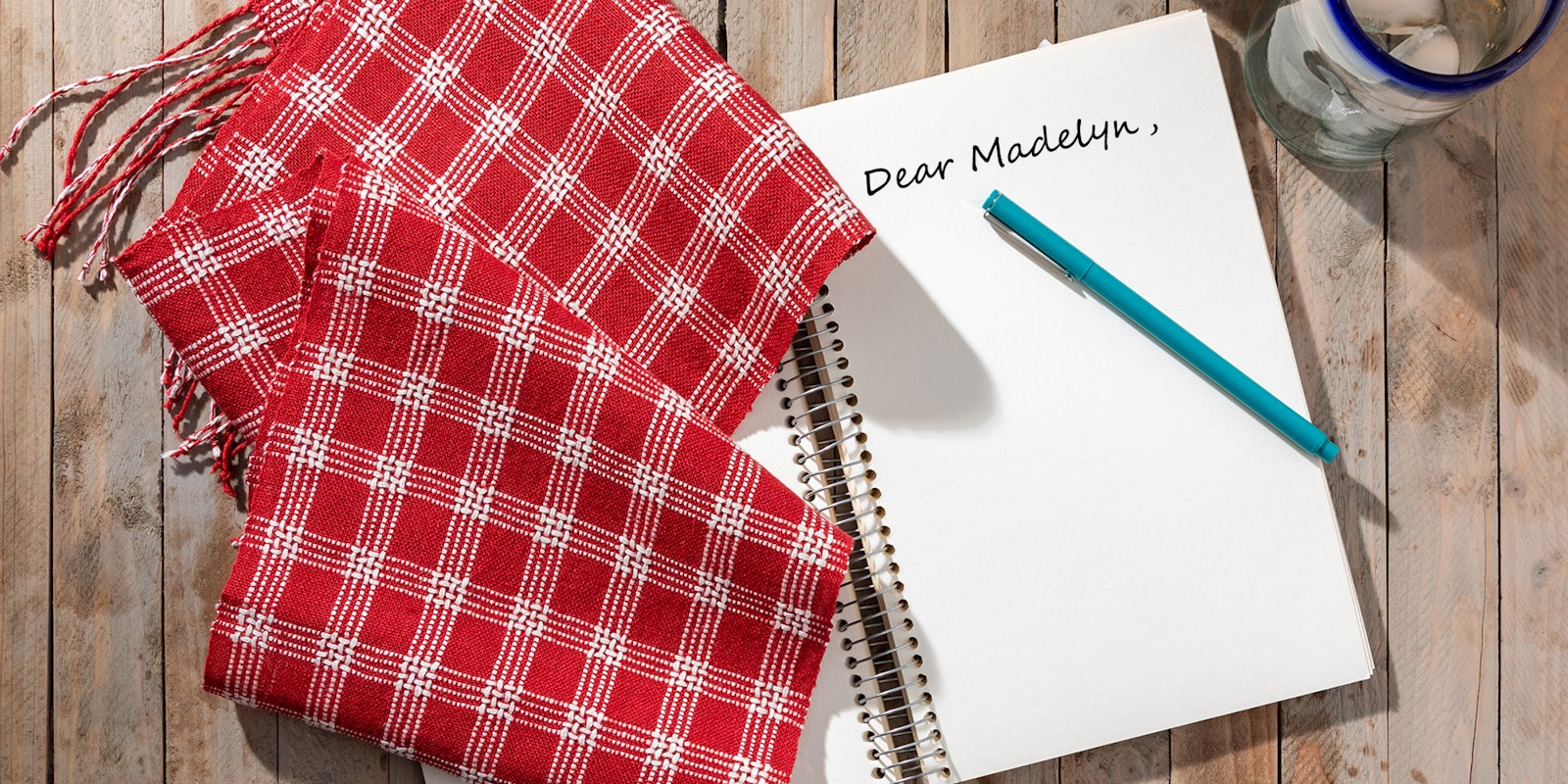Years ago I saw a rug that the weaver called a 'stuffer rug'. I don't know if that means two warps or more wefts? It was very pretty and thick, which is what I'd want for a rug I'd like to weave for my new grandchild. I do remember that the weaver had an extra back beam. Could I accomplish that with weights?
--Paula Nordwall
Hi, Paula.
This rug was probably woven in a structure that has been called "warp stuffer rug weave" and "summer and winter polychrome without a tabby." These are both unwieldy names for a weave that is more correctly called "taqueté." Taqueté can be woven on the same threading as summer and winter, but there is no ground cloth. There are two (or more) wefts rather than two warps, even though the way the warp interlaces can encourage using two warp beams.
Here's how it works. A warp suitable for rugs (linen or tightly twisted cotton) is threaded like summer and winter but spaced openly enough that a heavy weft can cover it completely. Like summer and winter, taqueté is a block weave (two blocks on four shafts, six blocks on eight). When you weave, you use (usually) two weft colors. With shaft 1, you raise all the "pattern" shafts where the first color will not show on the face and weave with it, then, also with shaft 1 you raise all the shafts where the second color will not show. You repeat the same selection of pattern shafts and weft colors with shaft 2, and continue in this way. What happens is that both colors weave with shafts 1 and 2 while the warp threads on (pattern) shafts 3 and above do not really weave; instead they lie between the two colors. As a result, take-up on them is less than the take-up on shafts 1 and 2, thereby sometimes requiring a separate beam or tensioning system. This is usually not a problem with just one rug. Also, because they do not really "weave," ends on shafts 3 and above are the "stuffers" in "stuffer rugs." Sometimes they are a heavier yarn than the yarn on shafts 1 and 2 to make a thicker rug. For an example of taqueté, see Michael Rohde, "Block Weave Rugs," pages 44-47, May/June 2000 and Debra Sharpee, "Indonesian Batik and a Swedish Technique," September/October 2008, pages 34-36 (using a different threading but the same result).
--Madelyn

